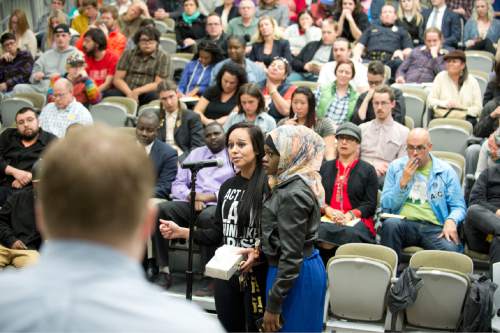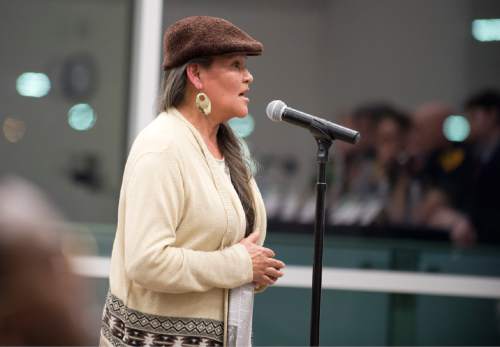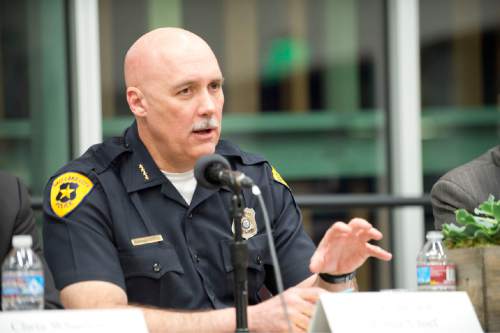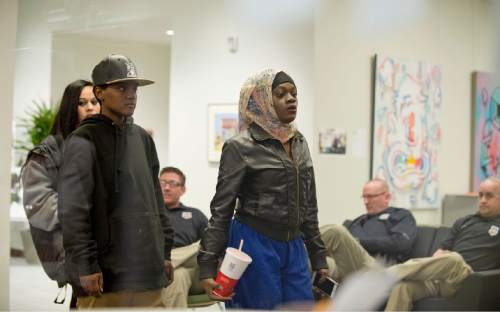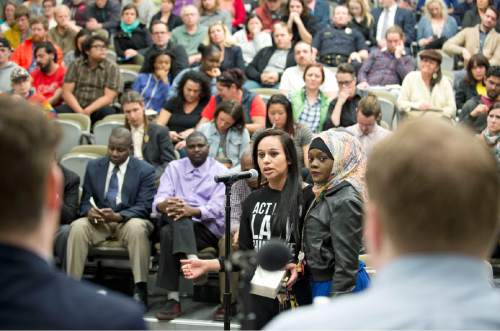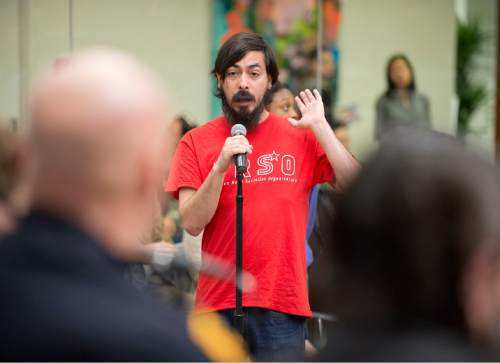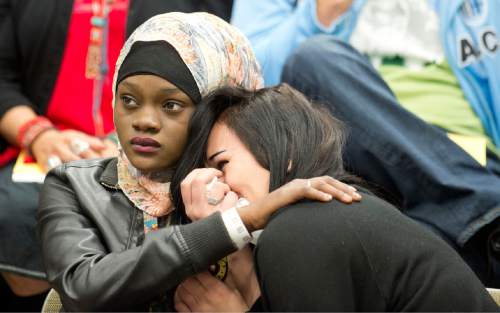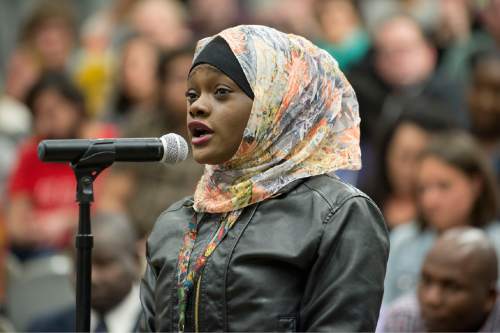This is an archived article that was published on sltrib.com in 2016, and information in the article may be outdated. It is provided only for personal research purposes and may not be reprinted.
Community mistrust in the aftermath of the officer-involved shooting of a 17-year-old wielding a metallic object — that also has been described as a broken broom handle — was on display Wednesday evening as residents vented frustrations at a meeting called by the Salt Lake City Human Rights Commission.
About 100 people attended the emotional "listening session" at the Marmalade Branch of the Salt Lake City Library. Many said they couldn't understand why police shot the young man who was not threatening the officers.
About 25 residents made statements and asked questions of the panel that also included interim Police Chief Mike Brown; David Litvack, the mayor's deputy chief of staff; and City Council Chairman James Rogers.
The discussion centered on the Saturday shooting of Abdullahi Omar Mohamed by Salt Lake City police officers, who were responding to a call of an assault in progress. He remains in stable condition at University of Utah Hospital.
Immediately after the shooting, a melee unfolded at the scene near The Road Home shelter on Rio Grande Street that resulted in the dispatch of about 100 officers from the city and neighboring jurisdictions.
Noor Ul-Hasan asked why police shot Mohamed three times. "It tells me that person doesn't have good instincts," she said. "If it's that easy to do that, what is going on in their heads?"
A number of others, such as Marcia Rodriguez asked questions concerning de-escalation training.
"I'm concerned that we're not sending the right responders," she said. "These officers should be trained in de-escalation before [they are sent out on such calls] and shoot."
Brown said de-escalation training is a priority for his department.
Police say Mohamed and another man were using "metal objects" to attack an unarmed victim when officers shot Mohamed after he did not respond to a command to drop his weapon.
However, a witness, Selam Mohammad, said the two were fighting each other with pieces of a broken broom — and that Abdullahi Mohamed was defending a third person. She said Abdullahi Mohamed's back was facing the officers when they arrived.
The most tense moments of the evening occurred when Mohamed's girlfriend, Becca Monson, addressed the board. She wondered why police shot him and why they hadn't released police body-camera video of the shooting. A tearful Monson said their 4-year-old son cries for his father every night.
The police chief explained that the matter is under investigation by the Unified Police Department and that the video is evidence. He added that he believed the video would eventually be released.
Gregory Lucero told the panel that in the wake of other officer-involved shootings, Salt Lake City police have put on a public-relations show that amounted to nothing. He said he remained hopeful that things would change under new Mayor Jackie Biskupski and Brown, who took over as chief last summer.
"Systemic problems require systemic solutions," Lucero said. "If we don't see systemic change, I guess we'll see you out on the street."
Lucero, among others, questioned why the police were investigating the police in such shootings.
Brown told the audience that an independent police agency is investigating the shooting, along with the Salt Lake City Police Division of Internal Affairs. The Salt Lake County district attorney's office will conduct an independent probe, as will the Salt Lake City Police Civilian Review Board.
Litvack told the audience that it's important for members of the community to let their feelings be known to officials. And it's equally important, he said, that City Hall listens.
"The process of working together to build a community is difficult," he said. "It's about listening to the community and working with the community."
Mohamed's shooting comes 14 months after the police-involved shooting death of James Dudley Barker, 42, near I Street and Second Avenue. Police had responded to a "suspicious man" call. Barker was seeking work shoveling snow.
In August 2014, Dillon Taylor, 20, was shot dead by Salt Lake City police outside a convenience store near 2100 South and State. They were responding to a 911 call of "a man with a gun." Taylor was unarmed.
The shooting deaths of Barker and Taylor both were ruled as "justified."


